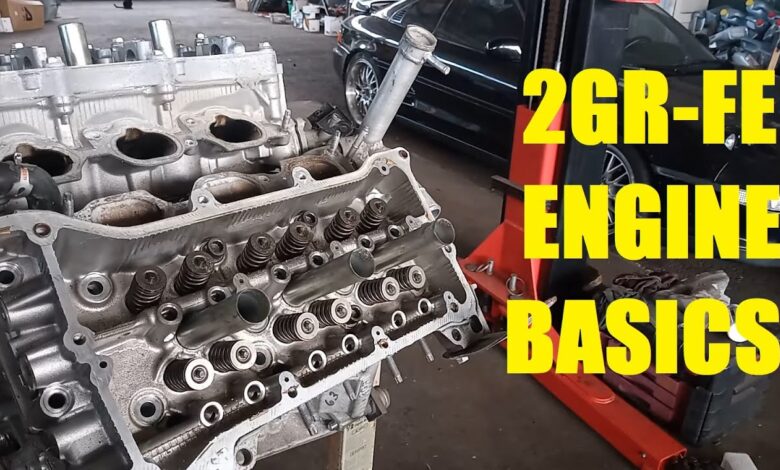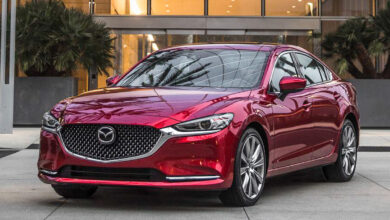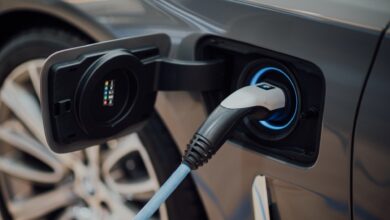2gr-fe is an Enlarged and Updated form of Powerful Engine

Introduction
The 2GR-FE is a 3.5 L (3,456 cc)version of the GR series of engines. The 2GR-FE is an enlarged and updated version of the 1GR-FE engine first released in 2004. This new technology delivers high power and torque while improving fuel economy by 10% over the 1GR FE engine. It also features MPFI (Multi Point Fuel Injection), which helps reduce emissions by 20%. A lot has changed since 2004
The 2GR-FE is a 3.5 L (3,456 cc)version of the GR series of engines.
The 2GR-FE is a 3.5 L (3,456 cc)version of the GR series of engines. The 2GR-FE is an enlarged and updated version of the 1GR-FE engine first released in 2004, with new features including electronic fuel injection and direct injection system for more power and better fuel economy than previous engines from Subaru.
The 2GR-FE has been used in many different models over its lifetime including Legacy, Outback and Forester since 2004 but it was only recently that this engine became available for purchase by itself without any other parts attached to it because Subaru decided not to continue producing them after 2016 when they stopped making their Impreza WRX STI sports car model which used these same engines under different hoods depending on whether they were turbocharged or not (and therefore offering two versions).
The 2GR-FE is a direct-injection gasoline engine that can be found in Subaru Imprezas, Legacies and Foresters. It’s a turbocharged, intercooled DOHC 16-valve 4 cylinder engine with a cast iron block and aluminum heads. The 2GR-FE is rated at 170 horsepower at 5200 rpm and torque of 162 ft/lbs @ 4000 rpm.
The 2GR-FE is an enlarged and updated version of the 1GR-FE engine first released in 2004.
2GR-FE is an enlarged and updated version of the 1GR-FE engine first released in 2004. The 2GR-FE features a new cylinder head design, which allows for more power and better fuel economy at lower RPMs. This technology was developed by Honda’s engineers specifically for use with their hybrid drive system (HDS) engine management system, which allows them to optimize performance across a wide range of driving conditions.
The HDS uses sensors located throughout your vehicle’s interior to determine how you’re driving, then uses this information along with feedback from other components such as steering angle and throttle position sensors before making adjustments based on what it knows about your driving style—all while you’re still behind the wheel!
This system is designed to enhance fuel economy, performance and safety. For example, if the HDS senses that you’re driving aggressively, it will adjust your engine’s timing for maximum power output and response. If it detects that you’re driving conservatively on a long road trip, however, it will optimize your engine’s efficiency by adjusting its timing according to how aggressively or gently you are pressing down on the gas pedal.
The 2GR-FSE is an ultra low emission engine that can be flexibly tuned to meet market requirements.
2GR-FSE is a high performance engine that has been designed to meet the needs of customers with a requirement for high performance, low emissions and flexibility in tuning. The 2GR-FSE is an ultra low emission engine that can be flexibly tuned to meet market requirements.
The direct injection system reduces NOx emissions by up to 50% over conventional Otto cycle engines while producing similar power output and torque levels. This makes it ideal where strict regulations exist on NOx emissions or where there are concerns about harmful substances such as sulphur dioxide (SO2) entering the atmosphere from vehicle exhausts.
The 2GR-FSE is a 4-cylinder, 16 valve, dual overhead cam (DOHC) V6 engine with an aluminium block and head. The cylinder bore is 86mm, the stroke is 87mm and the compression ratio is 12:1. The engine has a displacement of 1998cc and produces up to 250hp at 6200rpm and 320Nm of torque at 4000rpm.
This new technology delivers high power and torque while improving fuel economy by 10% over the 1GR FE engine.
This new technology delivers high power and torque while improving fuel economy by 10% over the 1GR FE engine.
The 2GR-FE is a compact engine with a displacement of 1 liter, but it produces more than 300 hp and delivers up to 400 Nm (295 lb-ft) of torque. This makes it ideal for applications where space is limited or where performance and efficiency are required.
The 2GR-FE is designed to deliver high power and torque with minimal fuel consumption. To achieve this, the engine uses a direct injection system that combines gasoline and air in the combustion chamber to increase power output. The 2GR-FE also features an integrated exhaust manifold, which improves efficiency by reducing backpressure losses and minimizing heat loss from exhaust gases.
The 2GR-FE engine is a popular choice for many different applications, including passenger cars, light trucks and SUVs. This engine is found in the Toyota Highlander and Sequoia as well as many Lexus models.
It also features MPFI (Multi Point Fuel Injection), which helps reduce emissions by 20%.
MPFI is a fuel injection system that uses multiple spray points to increase the amount of fuel injected into the cylinders. It’s been used in diesel engines for decades, but has recently become popular with automakers because it helps reduce emissions and increase fuel economy. In addition to reducing CO2 emissions (which contribute to global warming), MPFI also improves power and torque output as well as horsepower per liter of displacement — all while improving drivability at high speeds.
In 2GR-FE applications, this technology works by using multiple nozzles located around each cylinder head (1 per bank) so that when you pressurize air into one or more cylinders at once, you can achieve higher pressures without causing damage to anything else inside your vehicle’s engine block! This allows for improved performance and efficiency without sacrificing reliability or durability; unlike other systems which only have one nozzle per cylinder head but still result in reduced power output due to lack of peak pressure being reached during combustion process itself.”
A lot has changed since 2004
The 2GR-FE is a 3.5 L version of the GR series of engines, which are also known as 1GR-FE engines in Canada and Mexico. This larger engine first appeared in 2004 and has been improved over time with new features such as direct injection and turbocharging.
The 2GR-FE has been released under many different names: it was first called the EA211, then renamed E2120 when they introduced direct fuel injection (DFI) technology; later still it became known as M112RX due to its higher compression ratio compared to previous models—a feature that helps improve performance but also increases wear on parts!
The 2GR-FE is one of Toyota’s most popular engines and has been used in many models, including the Camry, Avalon and Sienna minivans. It’s also been adapted for use as an industrial engine in forklifts, construction equipment and marine applications. Check out car accident attorney los angeles cz.law.
Conclusion
The 2GR-FE is an excellent option for any car looking for enhanced performance and efficiency. It’s not only a better engine than its predecessor, but it also has improved emissions standards. The 2GR-FE can be flexibly tuned to meet market requirements by using Electronic Control Unit (ECU) software that allows automakers to adjust parameters such as fuel economy and power output.
Read here more about this website.




